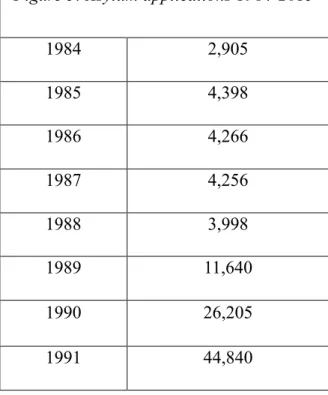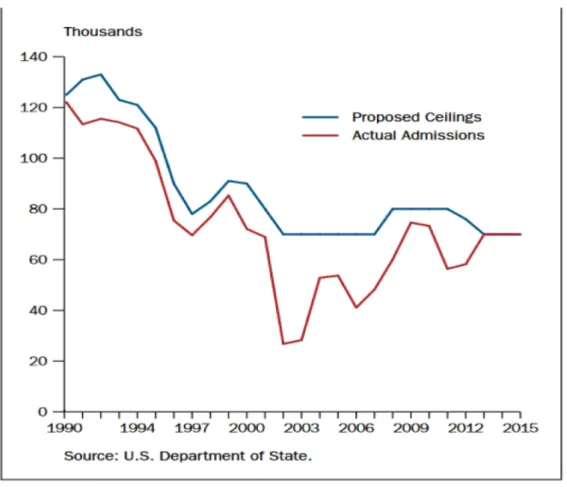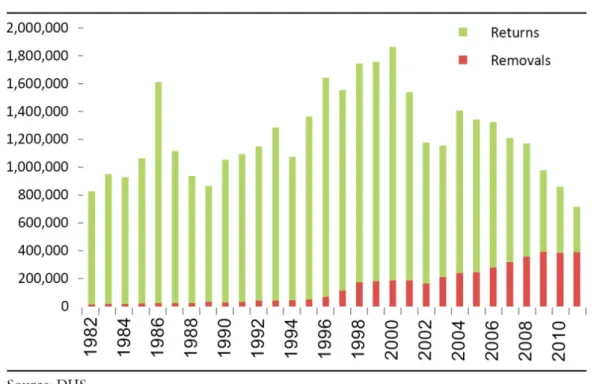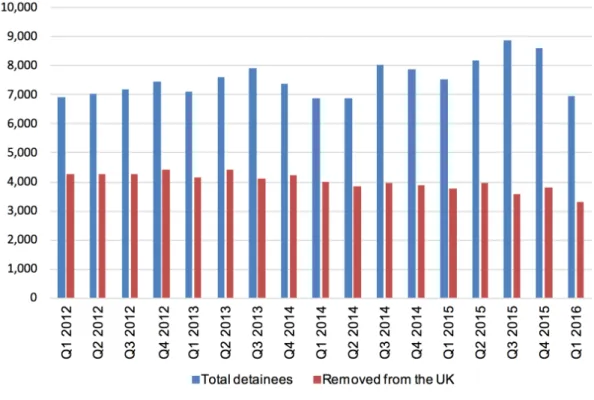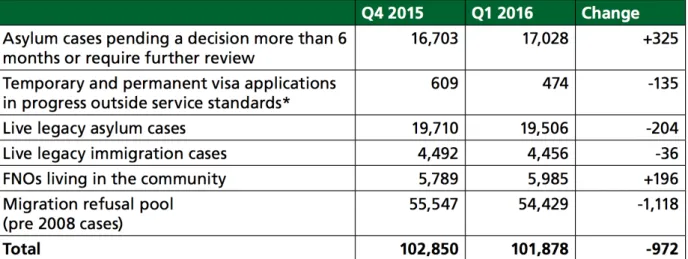Immigration in the UK and the USA: Priorities in Detention and Deportation
Texte intégral
Figure
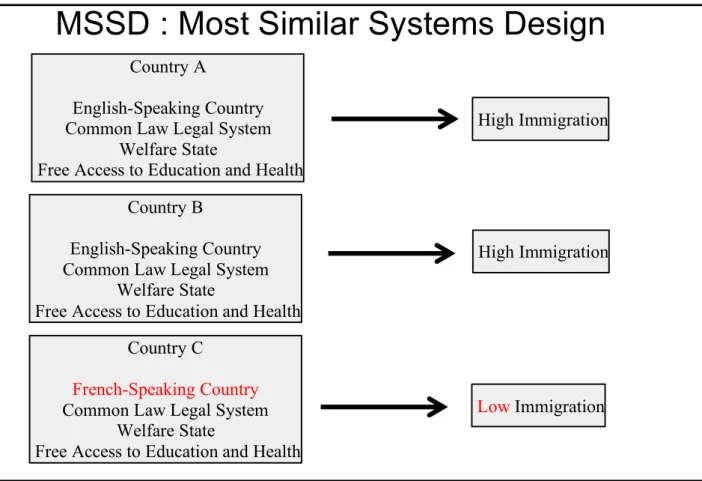
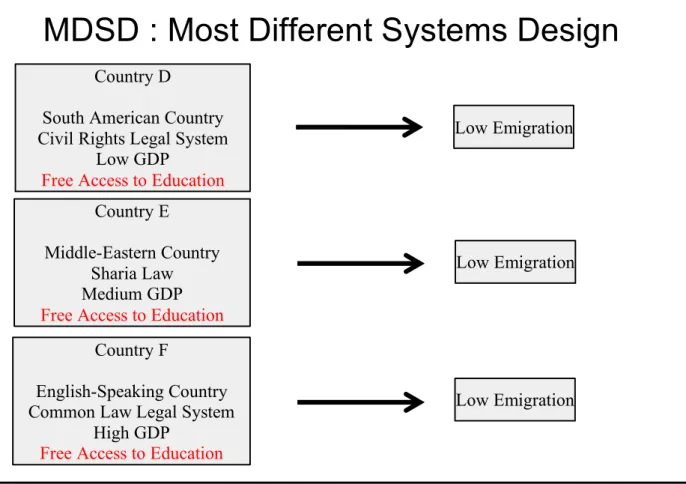
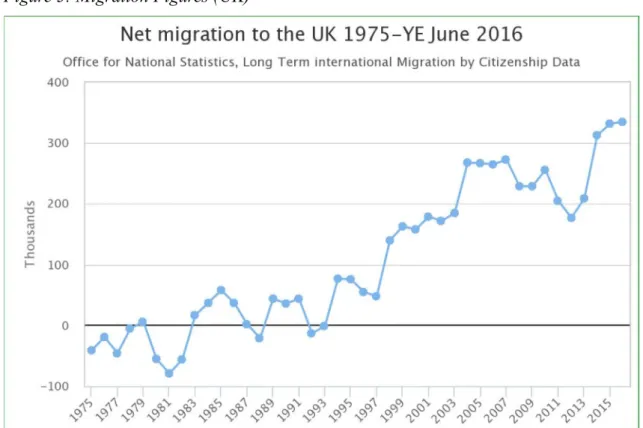
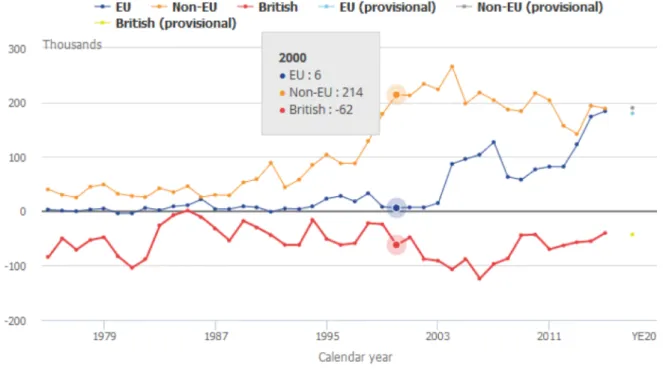
Documents relatifs
NCPs are asked in particular to distinguish whether children can be detained who are (a) accompanied by parents and (b) unaccompanied. National legislation allows the placement
Tempor ary Foreign Work ers, Per m a nent Migr a nts, a nd Competition with Ca nadi a ns Beine and Coulombe (2014) analyze empirically the possible competition for jobs between
Theory – plural composition of society: The importance of the Host Country Perspective:. Host Country
The decisions made by ordinary civil servants and adminis- trative decision-makers – to detain, order continued detention, and move individuals from immigration deten- tion
Theorem 4.8 in that paper remains unchanged but the proof has to be rewritten according to the new version of the lemma. Then, [ 2 , Theorem 4.8] remains unchanged but its proof has
Based on the two main issues of relevancy and presentation of information (as described in Chapter 1), there are two modes of information presentation. The first
The aim of this paper is to explore the experience of exile in two folk songs of Bruce Springsteen: “American Land” (2006) and “The Ghost of Tom Joad” (1995).. First, a brief
Once in Pennsylvania, she reconnected with her former Göttingen colleague Weyl, himself freshly recruited to the Institute for Advanced Study by its first director, Flexner, and
